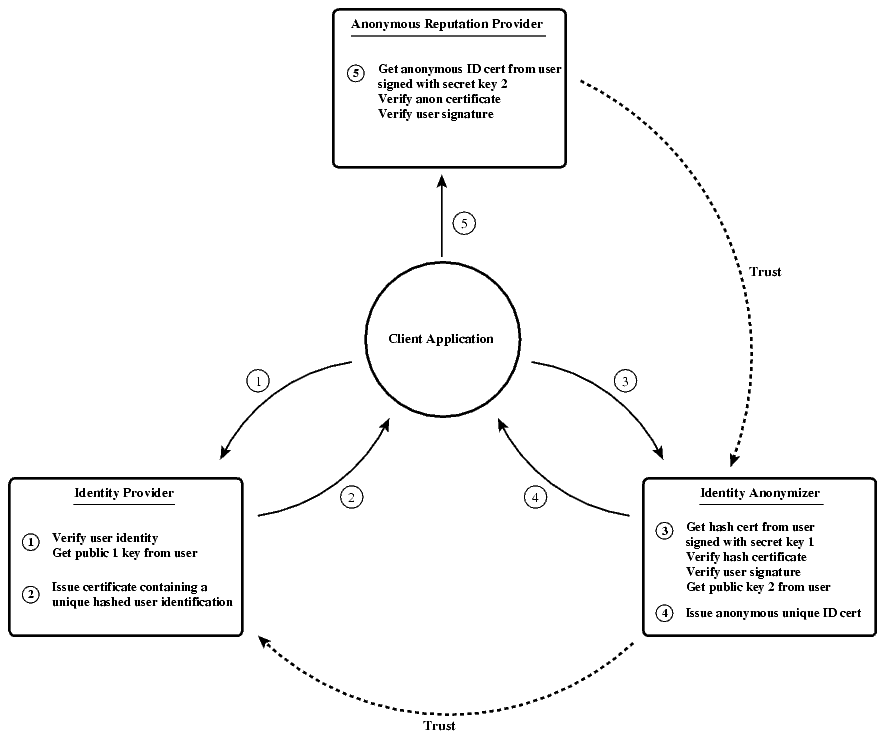ARM4FS Identity Provider Integration: Difference between revisions
Jump to navigation
Jump to search
No edit summary |
m (→Proposal) |
||
| Line 10: | Line 10: | ||
[[Image:Identity Provider Interaction Schema.png]] |
[[Image:Identity Provider Interaction Schema.png]] |
||
[[Media:Identity Provider Interaction Schema.fig]] |
|||
Step 1: The user sends his authentication information along with a new public key |
Step 1: The user sends his authentication information along with a new public key |
||
Revision as of 12:00, 31 October 2006
Problem
Anonymous Reputation Provider (ARP) needs proof of identity in order to prohibit sybil attacks. On the other hand, user identities should not be stored on the ARP, because in case of, e.g. a raid this would compromise the users' anonymity.
Proposal
Media:Identity Provider Interaction Schema.fig
Step 1: The user sends his authentication information along with a new public key
PK1 to an identity provider. The identity provider must know either by
convention or by negotiation about the set of ID features required by the
system. The secret key that corresponds to PK1 will be termed SK1.
Step 2: After verifying the user's authentication information the identity provider
hashes the previously defined set of ID features and issues an x.509
certificate containing this hash, the features used for hashing and the
key PK1. This certificate is signed with the identity providers secret
key IPSK. We'll call the corresponding public key IPPK. The hash certificate
is sent back to the user.
Step 3: The user takes the hashed ID certificate and sends it to a third instance,
termed the identity anonymizer. We need this instance, because the hashed
ID, in conjunction with knowledge about the set of ID features allows a
potential attacker to check known user identities against hash values. The
user also sends a signature on this certificate using key SK1. A second
public key PK2 is generated by the user and transmitted to the identity
anonymizer. We could also use PK1 again, but this could possibly allow an
attacker to identify the user.
Step 4: After verifying the hashed certificate and checking the user's signature
against PK1 the identity anonymizer issues a new x.509 certificate containing
a unique but random user ID along with key PK2. This certificate is sent back
to the user.
Step 5: The user sends this certificate to the ARP, which checks the identity
anonymizer's signature and uses public key PK2 for securing the connection.
We do not need a signature with SK2 on the certificate, because the user
proves his knowledge of it by being able to decrypt messages from the ARP.
